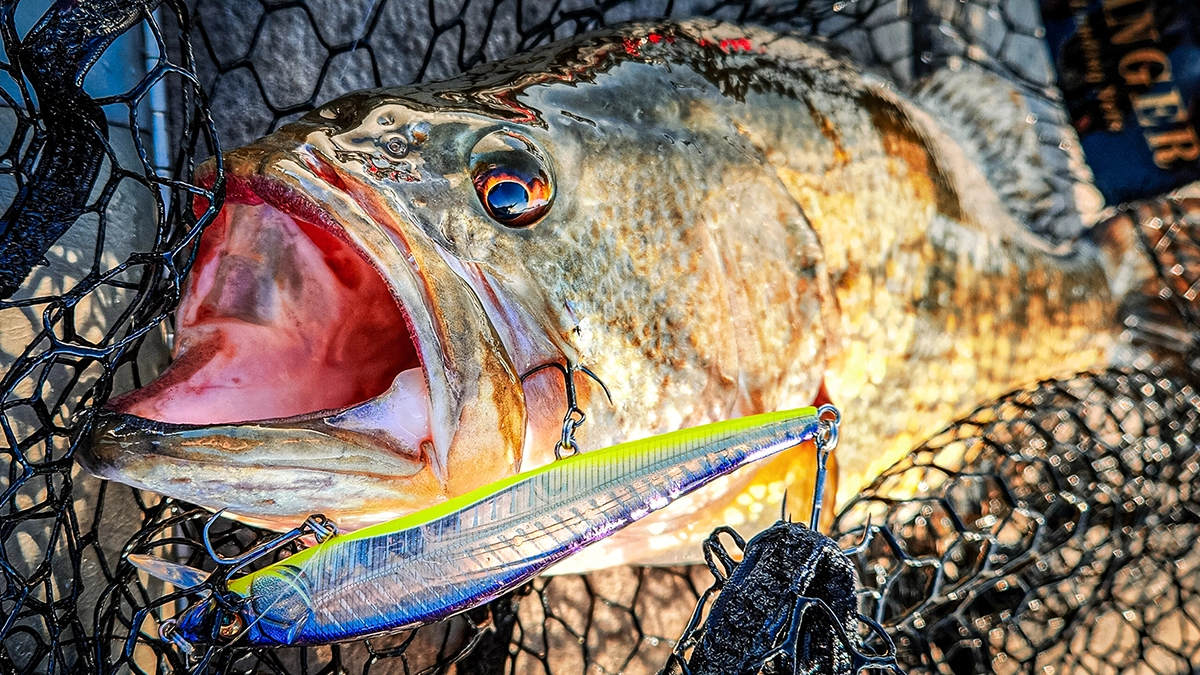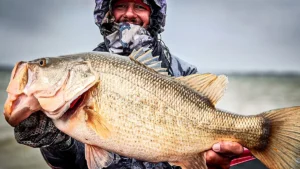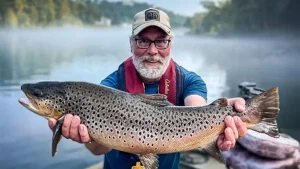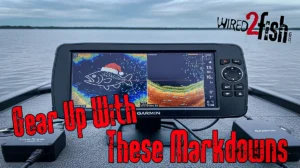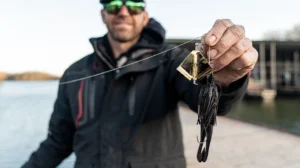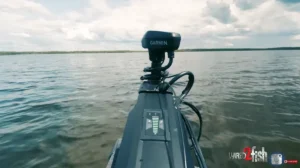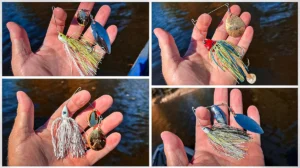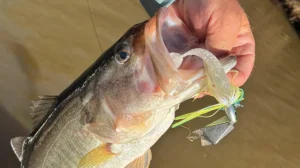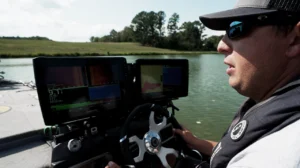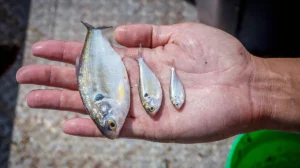If you are new to fishing entirely, walking into a tackle shop can be a little overwhelming. The amount of rod, reel, line and lure combinations can be a little over the tops at times, but fishing is all personal preference. Every angler has a different combination that they like for certain techniques. That’s the reason there’s so many different brands on the market — some people like some brands, and some people like others. It’s all personal preference. Folks can argue all day about whether baitcasters or spinning reels are better for jerkbaits, and again, everyone has their preference. That logic also extends to jerkbaits.
There are endless rod, reel, and line combinations on the market that are perfect for throwing stickbaits, but choosing the right style that fits your needs can be a little overwhelming. I’ve spoken to an excellent group of professional anglers to get their honest opinions on what their ideal jerkbait setups are. Some of their answers might surprise you, because they certainly surprised me.
The Need for Speed and Control
Capt. Andrew Full of the Lurelab Podcast (part of the Serious Angler Podcast Network) is a guy who knows a whole lot about jerkbaits. When not in the podcast studio, Full is a fulltime bass fishing guide on Lake Erie, chasing green and brown fish all over Western New York.
“When looking for the right jerkbait setup, I’m looking for a reel that can take my slack line up quick” Full says. “When using a jerkbait, you have quite a bit of slack line during the retrieve. It’s important to have a reel that can pick up that slack line quickly.
“Many fish smack the bait on the pause while your line is slack, so having a reel that can take up that line quickly is important to catching up to the fish, setting the hook and landing them. A baitcasting reel is the only reel choice that can do that.”
Full loves to use a Shimano Curado MGL 70 size baitcasting reel in an 8.1:1 gear ratio. (If you need some help figuring out the ideal gear ration, check this out.) With that high gear ratio and high IPT (inches per handle turn) you can take up the line much faster.

“I love the control that the MGL spool gives as opposed to a normal baitcasting spool. It allows for better control in your hand and lets you get a much further cast,” he adds.
Another Lake Erie bass guide and former Bassmaster Elite Series and Opens pro, Destin DeMarion, knows a thing or two about putting his clients on big bass with jerkbaits.
“I’m 100% a baitcast guy. As a kid I used spinning gear, so I can see from both sides that it all works. But for me, it’s all about control, and a baitcaster is the only style of reel that can give you that control” says DeMarion. “A baitcaster allows you to take up line much faster to gain on fish as they are making sudden movements when fighting.”
DeMarion is a huge fan of the Daiwa Tatula Elite baitcasting reel in a 100XS size, which is the 8:1 gear ratio model.
“I feel like you can keep more tension on a fish especially when using a high gear ratio reel, and generally that’s reserved more for baitcasters,” he says.
It’s All in the Rod…Size Does Matter!
When it comes to rod choice, size, action, and material all have to be taken into consideration. Because a jerkbait is a reaction style bait, you want a rod that can absorb the shock of the load when fighting a fish, but also be soft and subtle enough to not tear treble hooks out of a fish’ s mouth.
“I like a parabolic graphite or composite graphite/fiberglass blend rod. It won’t tear the trebles out of the fish, allows more free movement of the bait when the fish jumps, and you can fight the fish well when they do jump and make sudden movement,” DeMarion says.
DeMarion is one of the few anglers I know of who uses a rod that’s a bit longer for jerkbaits. His go to is a Douglas Rods XMatrix DXC 703MF casting rod, mainly because of its moderate fast-medium action that rod can absorb the fight of big Lake Erie smallmouth better than most.

Most anglers tend to stick to rods that are under 7 feet in medium action with a moderate-fast to fast action tip. Full is a big proponent of the 6’10” Alpha Angler Slasher Series rod. Most of the time you are twitching a jerkbait to the side or down, so having that shorter rod doesn’t move the bait nearly as much or have as much pull, even if it’s only a 2- or 3-inch difference.
Bassmaster Elite Series pro Alex Wetherell is a big fan of jerkbait fishing, whether it’s back home in Connecticut or out on the road chasing an Elite Series check. He’s also another angler who favors a baitcasting setup for jerkbaits. Wetherell loves throwing a Shimano Expride casting rod in 6’10” size with a medium action and fast tip.
“It’s something that I can make a good cast with while keeping perfect control of the bait and not moving it too much,” Wetherell says. “The longer the rod you use for a jerkbait, the more unnatural action you are adding to the bait.”
Does a Spinning Setup Ever Come into Play?
The anglers mentioned above can agree with me on this: Spinning gear does have its time and place when it comes to jerkbaiting, but it’s mainly used for fishing lighter baits that we just can’t send far enough with a baitcaster. Baits like a Megabass Vision Oneten Jr or a size 6 or 8 Rapala X-Rap just don’t have the weight that bigger jerkbaits do.
“The only time I’ll ever tough a spinning setup for jerkbaits is when the bait is too light for casting gear, otherwise it’s all on a baitcaster,” Wetherell says.
Like any light bait, it’s easier to show light slash style baits on spinning gear.

I recently had the chance to speak with Mark Zona, host of Zona’s Awesome Fishing Show, about one of his favorite cold-water techniques.
“When I’m jerkbaiting early in the spring, like I’m talking early when the ice comes off the lake, a spinning setup is what I’ll choose. It slows me down to keep that bait in the strike zone longer for those lethargic bass,” he says.
While having those lower gear ratios, spinning gear allows for you to fish as you’d normally would in the warmer months, but not move the bait as much. A spinning reel generally has a slower gear ratio, something in the 5.1:1 or 6.2:1 which allows you to not overwork the bait and keep it in the fish’s strike zone longer.
—

It’s no secret that I absolutely love catching bass on a jerkbait; year round, it is one of my favorite techniques for both species of bass, walleyes, and crappies. They just catch fish of all sizes.
I can agree with many of the anglers I spoke to: casting gear is the way to go for all jerkbaits. Even with new technology like BFS casting reels, you can get away with throwing smaller jerkbaits effectively with casting gear.
My go-to setups are similar. The only big difference is that I carry two jerkbait setups with me in the boat at all times: a setup for shallower baits and a setup for deeper diving baits.
For shallow slashbaits, I’m a huge fan of the Dobyns Sierra Series 683c rod paired with an old-school Shimano Curado 50E casting reel. The rod is a little on the short side at 6’8” with a medium-fast action, but I find it perfect for fishing anything shallower than 10 to 12 feet of water. Plus, the slower gear ratio reel allows me to work the bait a little slower as well.
For deeper baits and any water that’s 15 feet or deeper, I fish a Dobyns Kaden Series rod in model 610-4 paired with a Daiwa Tatula CT casting reel in a 7.1:1 gear ratio. This allows for subtle movement of the bait while still keeping total control of the bait and the fish when hooked. These two combos are a match made in heaven when it comes to covering all aspects of jerkbaiting.
Overall, casting gear is going to be the number-one choice for most anglers out on the water and for good reason. The ability to take up more line with a faster gear ratio reel and have more control over the fish is the real reason to use them. With spinning gear, you can’t take up line fast enough when bass make those hard surges towards you, or when you have a lot of slack in the line when jerking the bait.
